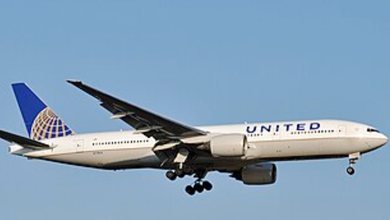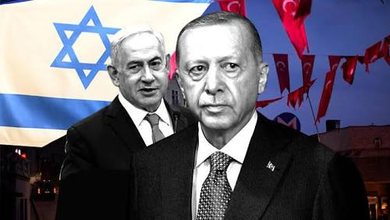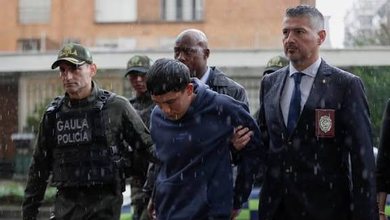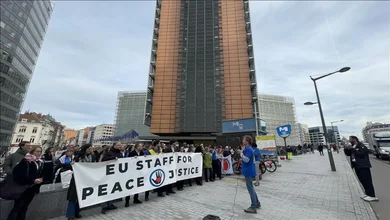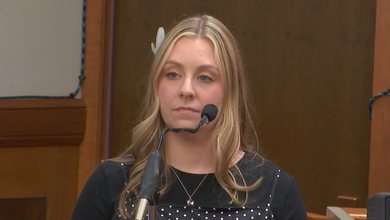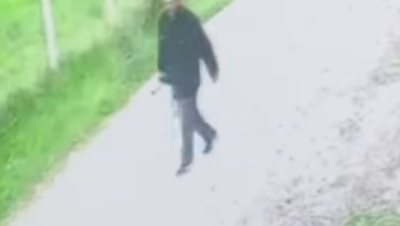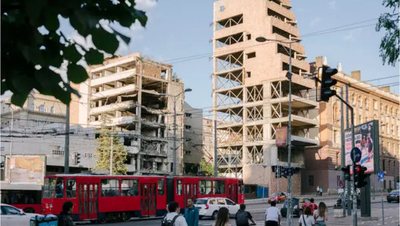
The Gaza of maps and memories no longer exists — it has been replaced by a monochrome landscape of ruins that stretches flat and serene in a 180-degree arc, from Beit Hanoun on one side to Gaza City on the other.
Beyond the distant shapes of buildings still standing in Gaza City, almost nothing remains to help with orientation, or to identify the neighborhoods that once housed tens of thousands of people.
This was one of the first areas Israeli ground troops entered in the opening weeks of the war. Since then, they have returned several times, as Hamas has regrouped around its bases in the area.
Israel does not allow news organizations to report independently from Gaza. Today, it took a group of journalists, including the BBC, into the area of the Strip occupied by Israeli forces.
The short visit was highly controlled and did not include any contact with Palestinians or access to other parts of Gaza.
Military censorship laws in Israel require that military personnel view the material before publication. The BBC maintained editorial control over this report throughout.
Wide shot showing complete destruction with buildings flattened into gray rubble, and a security camera
The remains of Shejaiya, an eastern neighborhood of Gaza City
Asked about the extent of the destruction in the area we visited, Israeli military spokesman Nadav Shoshani said that this was “not a target.”
"The objective is to fight terrorists. Almost every house had a tunnel entrance or was mined, or had an RPG [anti-tank grenade launcher] or a sniper position," he said.
"If you walk fast, in a minute you can find yourself inside the living room of an Israeli grandmother or child. That's what happened on October 7th."
More than 1,100 people were killed in Hamas attacks on Israel on October 7, 2023, and 251 others were taken hostage.
Since then, over 68,000 Gazans have been killed, according to the Hamas-run Health Ministry.
The bodies of several hostages have been found in the area, Lt. Col. Shoshani said, including the body of Itay Chen, who was returned to Israel from Hamas this week. The search continues for the bodies of seven other missing hostages.
The Israeli military base we traveled to is located a few hundred meters from the "yellow line" - the temporary border set out in US President Donald Trump's peace plan, which separates areas of Gaza under Israeli control from those under Hamas control.
The Israeli army is gradually marking the yellow line with blocks on the ground, as a warning to Hamas fighters and civilians.
There are still no clear signs on this part of the line – a soldier points me in the direction of a patch of sand among the gray ruins of destroyed buildings.
The ceasefire is nearly a month old, but Israeli forces say they are still fighting Hamas fighters along the yellow line “almost every day.” Piles of bronze-colored shell casings mark the firing points toward Gaza City.
Hamas has accused Israel of "hundreds" of ceasefire violations, and the Hamas-run Health Ministry in Gaza says over 240 people have been killed as a result.
Colonel Shoshani said that Israeli forces are committed to the US-led peace plan, but also that they will ensure that Hamas no longer poses a threat to Israeli civilians, and will stay as long as necessary.
“It is very clear to everyone that Hamas is armed and is trying to control Gaza,” he said. “This is something that will be resolved, but we are still a long way off.”
Buildings in Gaza City have been reduced to gray, dusty rubble (image brightened for clarity)
The next phase of the US-led plan calls for Hamas to disarm and hand over power to a Palestinian committee overseen by international figures, including President Trump.
But instead of handing over power and weapons, said Colonel Shoshani, Hamas is doing the opposite.
“Hamas is trying to arm itself, to show dominance, to exert control over Gaza,” he told me. “It is killing people in broad daylight, to terrorize civilians and to show them who is ‘boss’ in Gaza. We hope that this agreement will put enough pressure on Hamas to disarm.”
Israeli forces showed us a map of the tunnels they said the soldiers had found under the rubble we saw — “an extensive network of tunnels, almost like a spider’s web,” they said — some already destroyed, some still intact, and some still being searched for.
Can the Gaza ceasefire agreement survive?
New images show Israeli line of control deeper into Gaza than expected
What happens in the next phase of this peace plan remains unclear.
The deal has left Gaza in a state of limbo. Washington knows how fragile the situation is – the ceasefire has already been broken twice.
The US is exerting great pressure to move from this volatile standoff to a more lasting peace. It has sent a preliminary resolution to members of the UN Security Council that outlines a two-year mandate for an international stabilization force to take over security in Gaza and disarm Hamas.
But details of this next phase are scarce: it is not known which countries will send troops to secure Gaza before Hamas disarms, when Israeli troops will withdraw, or how the members of Gaza's new technocratic administration will be appointed.
President Trump has presented his vision for Gaza as a futuristic hub of the Middle East, built with foreign investment. But that is a far cry from Gaza's current state.
Nearly destroyed by Israel, and seen as an investment opportunity by Trump, the question is not just who can stop the war, but how much say Gazans themselves will have in the future of their communities and lands.
A map showing the yellow line running along the Gaza border, with Beit Hanoun near the northern border and Shejaian near the yellow line on the northeastern border./BBC


